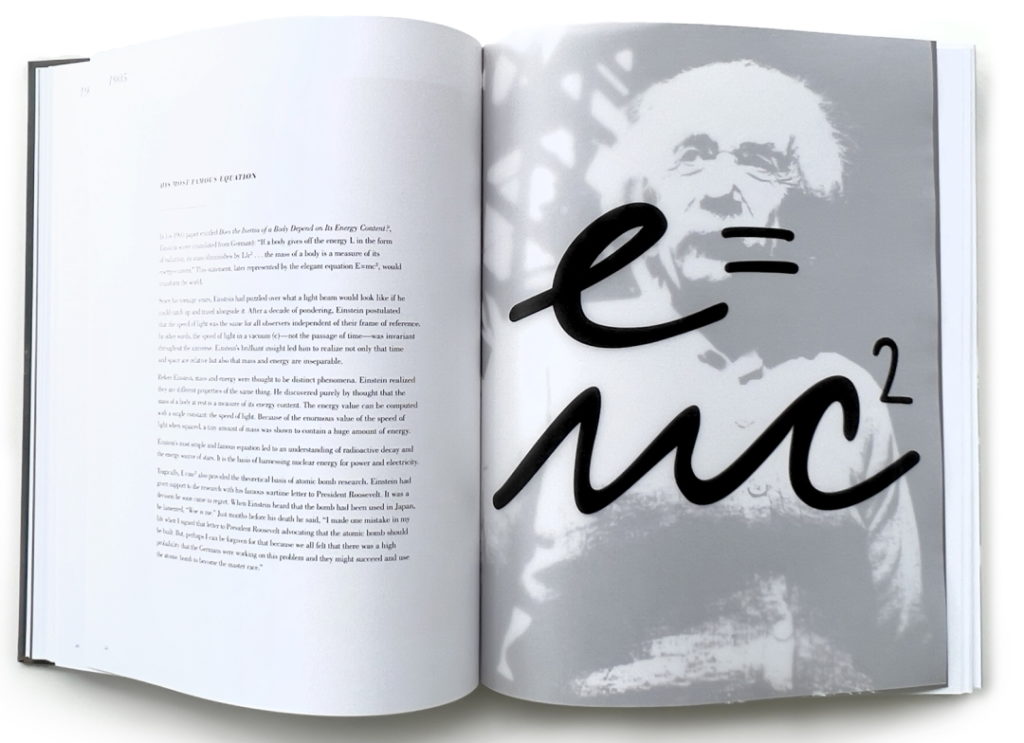
Einstein’s most famous equation, E=mc2 is also the world’s most famous equation.
People often ask, what does E=mc2 mean; why is E=mc2 so famous; why is speed of light in E=mc2; and what is E=mc2 used for today?
This brief article answers these questions, based on excerpts from the book, Einstein: The Man and His Mind.
Basically, Einstein’s most famous equation says that energy and mass are interchangeable; in fact, they are parts of the one and same thing. Albert Einstein published this remarkable discovery during his “miracle year” of 1905. It immediately followed his publication of the special theory of relativity from which it was derived.
In 1905, 26-year-old Albert Einstein was a technical expert third class at the Bern Patent Office, ironically having failed to obtain an academic position. Virtually unknown by the scientific community, he published four papers in rapid succession in the influential journal Annalen der Physik (Annals of Physics) in 1905 that completely transformed physics. In his paper entitled “Does The Inertia Of A Body Depend On Its Energy Content?”, Einstein wrote (translated from German): “If a body gives off the energy L in the form of radiation, its mass diminishes by L/c2… the mass of a body is a measure of its energy-content”. This statement, later represented by the elegant equation E=mc2, would transform the world.
Since his teenage years, Einstein had puzzled over what a light beam would look like if he could catch up and travel alongside of it. He later commented, “During this year in Aarau the following question came to me: if one chases a light wave with the speed of light, one would have in front of him a time independent wave field. Such a thing seems however not to exist!”
After a decade of pondering, Einstein postulated that the speed of light was the same for all observers independent of their frame of reference. In other words, the speed of light in a vacuum (c) – not the passage of time – was invariant throughout the universe. Einstein’s brilliant insight led him to realize not only that time and space are relative but also that mass and energy are inseparable.
Before Einstein, mass and energy were thought to be distinct phenomena. Einstein realized they are different properties of the same thing. He discovered purely by thought that the mass of a body at rest is a measure of its energy content. The energy value can be computed with a single constant – the speed of light. Because of the enormous value of the speed of light when squared, a tiny amount of mass was shown to contain a huge amount of energy.
Einstein’s most simple and famous equation led to an understanding of radioactive decay and the energy source of stars. It is the basis of harnessing nuclear energy for power and electricity.
Tragically, E = mc2 also provided the theoretical basis for atomic bomb research. Einstein had given support to the research with his famous wartime letter to President Roosevelt. It was a decision he soon came to regret. When Einstein heard that the bomb had been used in Japan, he exclaimed, “Woe is me.” Just months before his death he said, “Perhaps I can be forgiven, because we all felt that there was a high probability that the Germans were working on this problem and they might succeed and use the atomic bomb and become the master race.”
